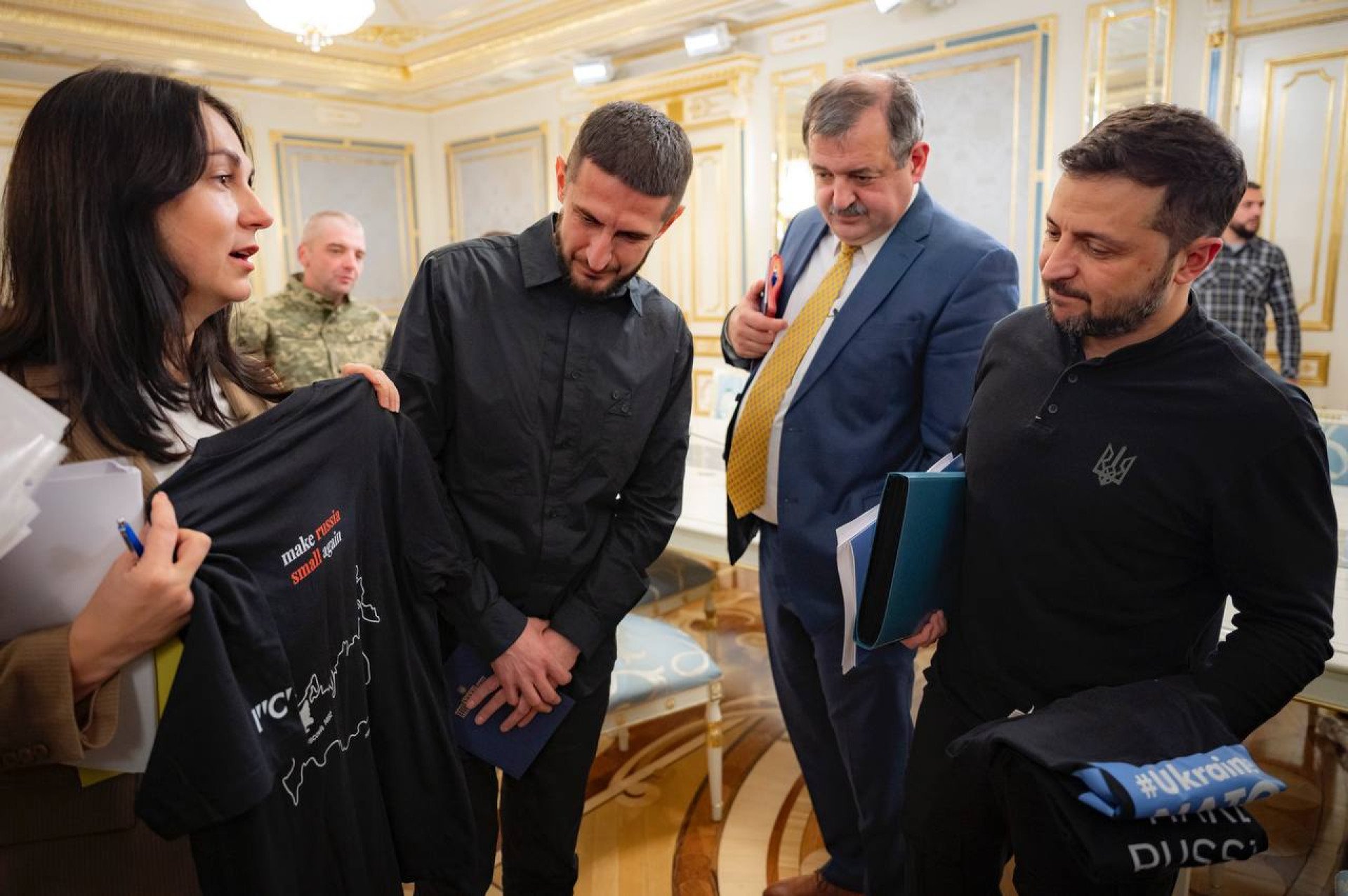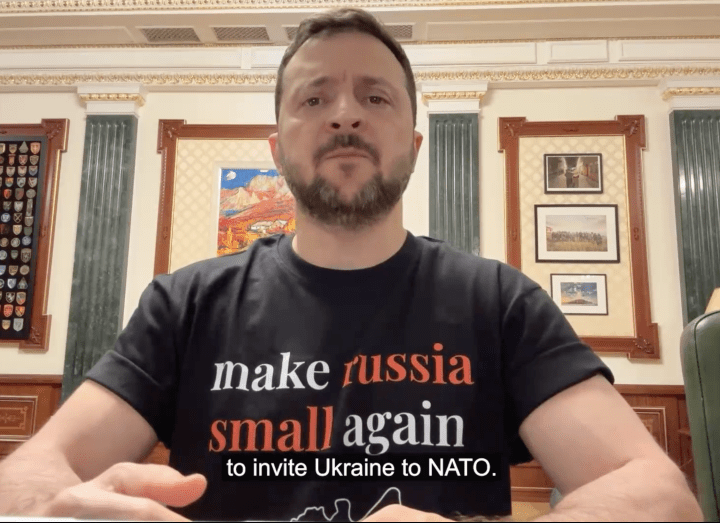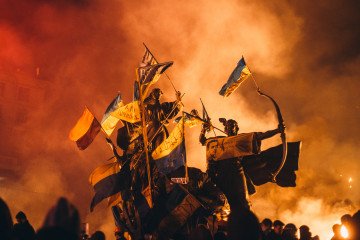- Category
- War in Ukraine
Make Russia Small Again: The Message Behind Zelenskyy’s T-Shirt

For 700 years, Moscow has expanded through relentless land grabs, growing into the largest country on Earth while subjugating countless nations.
In a recent video address, President Zelenskyy appeared wearing a T-shirt emblazoned with the slogan “Make Russia Small Again.” But this isn’t just a catchy phrase—it’s a call for historical justice and a reminder of Russia’s centuries-old imperial ambitions.

The T-shirt displays a map of the Grand Duchy of Moscow as it was in 1462, under the rule of Prince Ivan III, who sought to break free from the Golden Horde’s dominance. This era marked the beginning of Muscovy’s expansionist campaigns, during which it claimed lands beyond its borders. In the following years, neighboring principalities such as Yaroslavl, Tver, Ryazan, and Rostov were conquered—the same region that made headlines in August 2024 when Ukrainian forces advanced into it.
Even back then, Moscow employed methods that would become its standard practice for centuries—deportation. After conquering the Novgorod Republic, Moscow forcibly relocated its population to other regions. This move was designed to crush any resistance, as Novgorod had long been independent and a powerful rival to Moscow. By dismantling its center of influence, Moscow eliminated any hope for independence and silenced the potential for protest.
It was Ivan III who first declared himself “Tsar of All Rus,” even though he had never ruled over the lands of Kyivan Rus and merely aspired to conquer them. Over time, his ambitions extended to the northern territories of modern Ukraine—Siveria and Chernihiv regions.
The territory of Tatarstan, where the BRICS summit took place in Kazan in 2024, was conquered in the mid-16th century. These lands have never historically belonged to Russia.
In the following centuries, Moscow simultaneously pushed in all directions—deep into Siberia, south to the Caucasus, even waging war with modern-day Iran, while also advancing westward. The empire continuously grew, fueled by a desire to extend its global influence. When Peter I proclaimed the Russian Empire in the early 18th century, he claimed to be “reclaiming lands,” but in reality, it was a relentless campaign of conquest. Like every other empire, Russia’s expansion was built on the systematic expansion of its territories and subjugation of the peoples within them.
A particularly revealing example is Alaska. Russia sold the territory because it lacked the resources to maintain control, while the U.S. initially hesitated over whether it was worth purchasing.
Even in the 20th century, after the collapse of the Russian Empire and the rise of the Soviet Union, Russia continued its territorial conquests. In 1939, the Molotov-Ribbentrop Pact—a secret agreement between Nazi Germany and the Soviet Union—was signed. This pact divided Poland and carved out spheres of influence in Eastern Europe, effectively igniting the start of World War II.
While global empires were letting go of their colonies and former vassals were gaining independence, the Kremlin remained focused on expanding its influence. Moscow backed the war in Korea, as well as numerous other military conflicts, particularly in Asia. Its socialist-communist reach extended well beyond Asia.
Russia is a vast prison of nations. Over centuries, it has conquered vast territories, and in doing so, has not only seized land but also sought to erase the identities of the peoples it subjugated—just as it did in Novgorod. Native inhabitants were deported and resettled elsewhere. Crimean Tatars were forcibly expelled from Crimea, while people from central Russia were relocated to Ukraine’s Donbas.
The “Make Russia Small Again” T-shirt symbolizes a call for historical justice: Moscow was a principality in 1462. The history of the territories beyond serves as a reminder that Russia’s big size is the result of imperial conquest, with many nations still trapped in a sprawling colony.
-29a1a43aba23f9bb779a1ac8b98d2121.jpeg)
-75927b6cdbd6a2bae75db91d57457680.jpg)
-46f6afa2f66d31ff3df8ea1a8f5524ec.jpg)
-fe851b90d8a0ba797c376cd41cd6a9ac.png)
-605be766de04ba3d21b67fb76a76786a.jpg)

-24deccd511006ba79cfc4d798c6c2ef5.jpeg)
-531fe8d92c87f1630d3f1a2503c33089.png)
